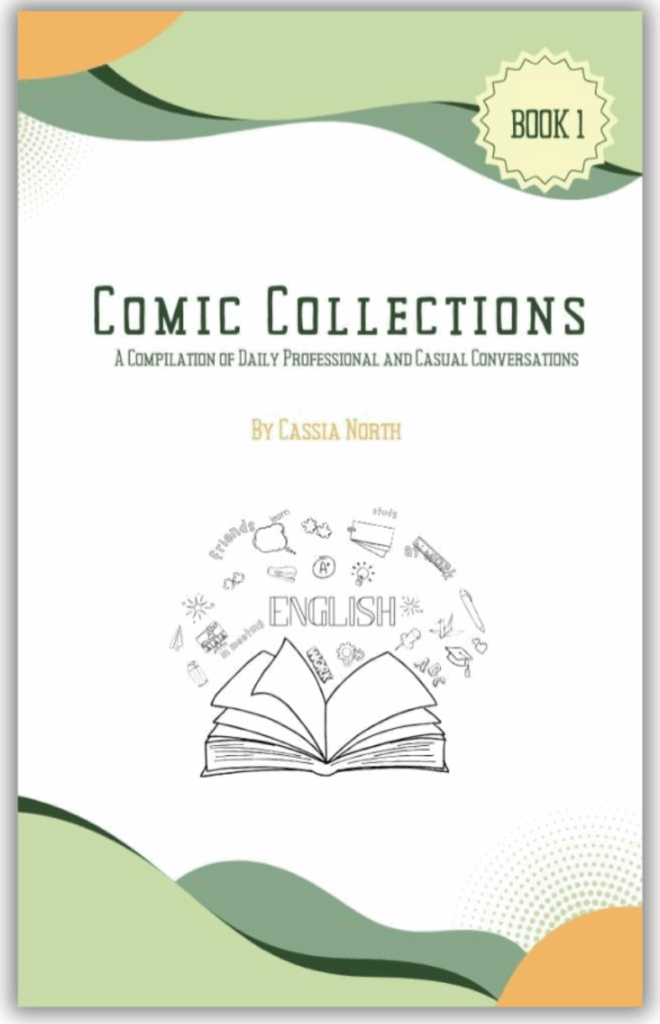
English Grammar for Business
"Let's Learn, Explore, and Connect to the World"

Sentence Structure & Clarity for Emails
- Jenelie Hijosa
- English Grammar for Business

Introduction
 In today’s digitally driven business landscape, email stands out as a cornerstone of corporate communication. Its efficiency, speed, and broad reach make it a preferred medium for exchanging information, ideas, and decisions across the globe. However, the effectiveness of an email is significantly influenced by two fundamental aspects of writing: sentence structure and clarity. These elements are not merely ornamental; they are crucial in ensuring your message is understood exactly as intended, avoiding misinterpretations that can lead to costly mistakes or missed opportunities.
In today’s digitally driven business landscape, email stands out as a cornerstone of corporate communication. Its efficiency, speed, and broad reach make it a preferred medium for exchanging information, ideas, and decisions across the globe. However, the effectiveness of an email is significantly influenced by two fundamental aspects of writing: sentence structure and clarity. These elements are not merely ornamental; they are crucial in ensuring your message is understood exactly as intended, avoiding misinterpretations that can lead to costly mistakes or missed opportunities.
Sentence structure—the way in which words are arranged to form a sentence—plays a pivotal role in the readability and comprehension of your emails. A well-structured sentence uses the right balance of simple, compound, complex, and compound-complex sentences to convey messages with precision.
Clarity, on the other hand, ensures that your message is unambiguous and straightforward, leaving no room for doubt about what you’re asking or informing your recipient. Together, these aspects of writing empower you to craft messages that not only capture attention but also encourage the desired response.
 The purpose of this blog is to delve deep into the art and science of sentence structure and clarity, specifically tailored for business emails. We’ll start by exploring the basic components of sentences and the types of structures that can be used to enhance readability and engagement. Following this, we’ll tackle the common pitfalls that obscure clarity and present strategies to avoid them. Useful techniques and real-life examples will guide you on how to apply these principles to your daily email communications. By the end of this post, you’ll have what you need when it comes to the knowledge and tools to write emails that are not only read but also respected for their professionalism and precision.
The purpose of this blog is to delve deep into the art and science of sentence structure and clarity, specifically tailored for business emails. We’ll start by exploring the basic components of sentences and the types of structures that can be used to enhance readability and engagement. Following this, we’ll tackle the common pitfalls that obscure clarity and present strategies to avoid them. Useful techniques and real-life examples will guide you on how to apply these principles to your daily email communications. By the end of this post, you’ll have what you need when it comes to the knowledge and tools to write emails that are not only read but also respected for their professionalism and precision.
With this foundation in mind, let’s embark on a journey to refine your email writing skills, this will ensure that every email you send is a step towards successful communication in the business world.
The crux of effective communication in business emails lies not just in what you say, but in how you say it. The structure of your sentences plays a crucial role in making your message clear and engaging. To master the art of email writing, one must first understand the basic building blocks of sentence structure and the different types that can be utilized to convey messages more effectively.
Basic Components of Sentences

Every sentence, at its core, is composed of three primary components: the subject, the verb, and often, the object.
- Subject: The subject is the person, place, thing, or idea that is performing the action or being described. It is essentially what the sentence is about.
- Verb: The verb expresses the action that the subject is performing or the state of being. It is the heart of the sentence, without which a sentence cannot exist.
- Object: The object is the one receives the action of the verb. It is what the subject acts upon. Not every sentence has an object, but when present, it completes the action expressed by the verb.
Consider the sentence, “The manager approved the project proposal.” Here, “The manager” is the subject doing the action, “approved” is the verb describing the action, and “the project proposal” is the object affected by the action.
Types of Sentences
Understanding the types of sentences is crucial for diversifying your writing and ensuring your emails don’t become monotonous or hard to read.

- Simple Sentences: A sentence is a simple sentence containing a single independent clause, which means it has one subject and one verb and expresses a complete thought. Example: “The deadline is approaching.”

- Compound Sentences: Compound sentences connect two independent clauses using a conjunction (such as “and,” “but,” or “or”) or a semicolon. These sentences are useful for showing a relationship between two separate but related ideas. Example: “The meeting ended early, but the discussion continued in the hallway.”

- Complex Sentences: A sentence is a complex sentence when it combines an independent clause with one or more dependent clauses. A dependent clause cannot stand alone as a complete sentence because it does not express a complete thought. Complex sentences are excellent for adding depth to your writing. Example: “Although the budget was tight, the team managed to deliver the project on time.”
Compound-Complex Sentences: Compound-complex sentences are combination of compound and complex sentences. If a sentence has at least two independent clauses together with one or more dependent clauses, then that is a compound-complex sentence. They are useful for conveying detailed and nuanced information. Example: “The teacher was happy because the students completed their activity on time, and the result was better than his expectation.”
Importance of Varied Sentence Structures for Readability
 Utilizing a variety of sentence structures is vital for keeping the reader’s attention and ensuring the readability of your emails. Monotonous sentence patterns can make your emails dull and harder to follow, while a mix of simple, compound, complex, and compound-complex sentences adds rhythm and dynamics to your writing. This variation helps in highlighting important points, creating suspense, or adding details subtly without overwhelming the reader.
Utilizing a variety of sentence structures is vital for keeping the reader’s attention and ensuring the readability of your emails. Monotonous sentence patterns can make your emails dull and harder to follow, while a mix of simple, compound, complex, and compound-complex sentences adds rhythm and dynamics to your writing. This variation helps in highlighting important points, creating suspense, or adding details subtly without overwhelming the reader.
In business emails, where clarity and brevity are valued, mastering sentence structure allows you to present your ideas clearly and persuasively. It enables you to guide the reader through your reasoning, emphasize critical points, and convey your message with confidence and precision.
By understanding and applying these principles of sentence structure, you are better equipped to craft emails that not only engage your reader but also achieve the desired outcome of your communication.
The Role of Clarity in Professional Emails
 Clarity in email communication is the bridge that connects your thoughts to the understanding of your recipients. It’s about making your message understandable at first glance, which is crucial in the fast-paced world of business where time is a precious commodity. Clear emails reduce the need for follow-up questions, decrease the likelihood of misunderstandings, and facilitate efficient decision-making. In essence, clarity helps in achieving your email’s objective more effectively, whether it’s securing a deal, providing instructions, or making a request.
Clarity in email communication is the bridge that connects your thoughts to the understanding of your recipients. It’s about making your message understandable at first glance, which is crucial in the fast-paced world of business where time is a precious commodity. Clear emails reduce the need for follow-up questions, decrease the likelihood of misunderstandings, and facilitate efficient decision-making. In essence, clarity helps in achieving your email’s objective more effectively, whether it’s securing a deal, providing instructions, or making a request.
Common Pitfalls that Reduce Clarity

Improving the clarity of your emails is not an arcane skill but rather a set of practical strategies you can apply:
- Be Concise and Specific: Get to the point quickly without sacrificing politeness. Use specific details when necessary to avoid ambiguity. Instead of saying “soon,” specify an exact time or date if possible.
- Use Simple Language: Opt for simple, straightforward language over complex vocabulary and technical jargon. When you must use specialized terms, consider including a brief explanation if the recipient might not be familiar with them.
- Structure Your Email for Readability: Break your email into short, manageable paragraphs and use bullet points or numbered lists to organize information. This structuring makes your email easier to scan and understand at a glance.
- Employ Active Voice: Those sentences in the active voice are clearer and they are more direct than those in the passive voice. Compare “The report was completed by the team” with “The team completed the report.”
- Revise and Edit: Before sending, take the time to review your email for clarity. Look for ways to simplify complex sentences, cut unnecessary words, and ensure that your main points are prominent and easy to find.
By embracing these techniques, you can significantly enhance the clarity of your email communication. Clear, well-structured emails not only convey professionalism but also facilitate effective communication, laying the groundwork for successful business relationships.
In the realm of business email communication, the crafting of effective sentences is pivotal. This not only conveys your message with precision but also reflects your professionalism. In this segment, we delve into practical tips that serve as tools for refining your sentence crafting skills, focusing on the use of active versus passive voice, the critical role of punctuation for clarity, and the strategic use of connectors and transitions.
Using Active vs. Passive Voice
To have a clear idea of the the differences between active and passive voice is fundamental in crafting sentences that are clear, dynamic, and engaging.

- Active Voice: A sentence is in active voice if the subject does the action expressed by the verb, leading to direct and vigorous sentences. For example, “The manager submitted the report yesterday.” Active voice sentences are usually shorter, clearer, and more impactful than their passive counterparts, making them the preferred choice in most business communications.

- Passive Voice: Passive voice sentences reverse the order, featuring the object of the action as the subject of the sentence. For instance, “The report was submitted by the manager yesterday.” While passive voice can be useful for emphasizing the action or when the doer is unknown or irrelevant, it often makes sentences longer and less clear. Use it sparingly and deliberately.
Tips for Using Active Voice:
Punctuation marks are considered as the traffic signals of language: they guide the reader through the text, indicating pauses, stops, and the flow of thought. Proper use of punctuation is essential for clarity in email communication.
- Commas (,): You need to use commas to separate items or points in a list, to set off introductory elements, and to clause off non-essential information. Incorrect comma use can change the meaning of your sentence.
- Periods (.): These signify the end of a statement. Short, punctuated sentences can add emphasis and are easier to read.
- Colons (:): Colons introduce lists, quotes, or further explanations. They can be particularly useful in emails to draw attention to key points or data.
- Semicolons (;): Semicolons link closely related ideas that could stand as separate sentences; they’re useful for balancing parts of complex lists or contrasting statements.
How to Use Connectors and Transitions
Connectors and transitions are the glue that holds your sentences and paragraphs together, ensuring a smooth flow of ideas. They guide the reader from one thought to the next, highlighting relationships between points.
- Addition: Words like “furthermore,” “moreover,” and “in addition” introduce additional information or ideas.
- Contrast: “However,” “on the other hand,” and “nevertheless” signal a contrast or contradiction.
- Cause and Effect: Phrases such as “as a result,” “therefore,” and “consequently” indicate causality between two statements.
- Sequence: “First,” “next,” “then,” and “finally” are useful for outlining steps or sequences in your message.
Tips for Effective Use:
- Use Sparingly: While connectors and transitions are crucial, overuse can make your writing feel cumbersome. Use them when they naturally fit to guide the reader through your argument or narrative.
- Vary Your Choices: Avoid relying on the same transition words repeatedly. Variety helps maintain reader interest and ensures a smoother flow of ideas.
 By integrating these practical tips into your email writing, you can significantly improve the effectiveness of your sentences. This not only aids in conveying your message with clarity and precision but also enhances the reader’s engagement and comprehension. Remember, the goal is to make your emails not just readable, but memorable and impactful.
By integrating these practical tips into your email writing, you can significantly improve the effectiveness of your sentences. This not only aids in conveying your message with clarity and precision but also enhances the reader’s engagement and comprehension. Remember, the goal is to make your emails not just readable, but memorable and impactful.
Crafting business emails that command attention and elicit action requires more than just clear and effective sentences; it demands a thoughtful structure that guides the reader through your message with ease. In this section, we’ll explore how to organize information logically, underscore the importance of well-crafted introductions, body sections, and conclusions, and highlight how to construct a compelling call to action.
How to Organize Information Logically
 Organizing information logically is paramount in business emails. It ensures that your message is coherent and that your key points are easy to find and understand. You can start by outlining the main points you want to communicate, then organize these points in a logical order. This could mean arranging them by priority, chronologically, or according to their relevance to the recipient. You can use headings, bullet points, or numbered lists to structure your content to make it easier for the reader to scan and grasp the essential information.
Organizing information logically is paramount in business emails. It ensures that your message is coherent and that your key points are easy to find and understand. You can start by outlining the main points you want to communicate, then organize these points in a logical order. This could mean arranging them by priority, chronologically, or according to their relevance to the recipient. You can use headings, bullet points, or numbered lists to structure your content to make it easier for the reader to scan and grasp the essential information.
Importance of Introductions, Body, and Conclusions
- Introductions: Always remember that your introduction sets the tone for the entire email and should clearly state the purpose of your message. It’s your first, and sometimes only, chance to capture the recipient’s attention. A strong introduction provides enough context to understand the rest of the email, outlines the main points, and indicates the email’s significance to the reader.
- Body: The body of your email delves into the details of your message. It’s where you argue, describe, or explain your points. Each paragraph should focus on a single idea, supported by facts, figures, or examples. Clarity and brevity are crucial here; avoid veering off-topic or including unnecessary information that could dilute your main messages.
- Conclusions: Your conclusion should summarize the key points discussed in the body and reinforce the email’s purpose. It’s also the place to include a call to action, making it clear what you expect from the recipient after reading your email.
Call to Action: Ensuring Your Emails Prompt a Response
A call to action (CTA) is a clear directive that tells the reader what to do next. It could be a request for information, a directive to complete a task, or an invitation to reply. To create an effective CTA:
- Be Specific: Clearly state what action you want the recipient to take. Vague requests are easily ignored.
- Create Urgency: If applicable, include a deadline or explain why timely action is important.
- Make it Easy: Provide all the information or resources needed to complete the action. If you’re asking for a reply, pose specific questions.
Crafting an email with a logical flow, clear sections, and a compelling call to action ensures that your message not only holds the recipient’s attention but also prompts the desired response. By meticulously structuring your emails, you enhance their impact, making every word count toward achieving your communication goals.
Crafting business emails that command attention and elicit action requires more than just clear and effective sentences; it demands a thoughtful structure that guides the reader through your message with ease. In this section, we’ll explore how to organize information logically, underscore the importance of well-crafted introductions, body sections, and conclusions, and highlight how to construct a compelling call to action.
Real-life Examples
Bad Sentence Structure: “Project deadlines not met by the team will result in client dissatisfaction, potentially losing future contracts, which is bad for our reputation.”

- Issues: This sentence is passive, overly complex, and lacks clarity.
Good Sentence Structure: “If our team fails to meet project deadlines, we risk client dissatisfaction and may lose future contracts, damaging our reputation.”

- Improvements: This revision uses active voice, simplifies the message, and clearly outlines the consequences of missing deadlines.
Bad Sentence Structure: “Feedback on the proposal by Wednesday is something that would be appreciated if you could provide it.”

- Issues: The sentence is passive, convoluted, and wordy.
Good Sentence Structure: “Please provide feedback on the proposal by Wednesday.”

- Improvements: The sentence is now direct, concise, and uses active voice.
Quick Exercises

Exercise 1: Rewrite the following sentence in active voice: “The meeting’s minutes were sent by the assistant.”
Exercise 2: Simplify this complex sentence: “In the event that we receive the client’s approval for the project scope, it is anticipated that the team will commence work on the project’s initial phase without undue delay.”
Exercise 3: Add clarity to this ambiguous sentence: “Your report on the project is due.”
Answers:
- “The assistant sent the meeting’s minutes.”
- “If we get the client’s approval for the project scope, the team will start work on the initial phase immediately.”
- “Please submit your project report by the end of the day on Thursday.”
These exercises are designed to help you practice restructuring sentences for greater clarity, conciseness, and impact. By regularly engaging in such exercises, you’ll enhance your ability to communicate effectively through email, ensuring your messages are not only read but acted upon.
As we conclude our exploration of sentence structure and clarity in business emails, let’s reflect on the key points we’ve discussed and consider the path forward to continually improve our email communication skills.
Recap of Key Points
 We began by understanding the importance of sentence structure and how the basic components of sentences—subject, verb, and object—combine to form clear and impactful messages. We explored the different types of sentences: simple, compound, complex, and compound-complex, and emphasized the significance of varying sentence structures to enhance readability and engagement in our emails.
We began by understanding the importance of sentence structure and how the basic components of sentences—subject, verb, and object—combine to form clear and impactful messages. We explored the different types of sentences: simple, compound, complex, and compound-complex, and emphasized the significance of varying sentence structures to enhance readability and engagement in our emails.
We then delved into the critical role of clarity in email communication, highlighting common pitfalls such as ambiguity, the overuse of jargon, and lengthy sentences that can obscure our message. Techniques to enhance clarity, including being concise and specific, using simple language, structuring our emails for readability, employing active voice, and revising for clarity, were discussed to help us craft more effective emails.
 Practical tips for crafting effective sentences shed light on the use of active vs. passive voice, the importance of punctuation for clarity, and how connectors and transitions can guide the reader smoothly through our message.
Practical tips for crafting effective sentences shed light on the use of active vs. passive voice, the importance of punctuation for clarity, and how connectors and transitions can guide the reader smoothly through our message.
Organizing information logically within our emails, from the introduction through the body to the conclusion, and crafting a compelling call to action, ensures our emails not only capture attention but also prompt the desired response.
Encouragement to Practice for Improvement
 Mastering the art of writing clear and structured emails is a journey of continuous improvement. Each email you write offers an opportunity to apply these principles, refine your skills, and enhance your ability to communicate effectively. Practice is key. Challenge yourself to review and revise your emails with the tips and techniques discussed, and observe the impact on your communication and the responses from your recipients.
Mastering the art of writing clear and structured emails is a journey of continuous improvement. Each email you write offers an opportunity to apply these principles, refine your skills, and enhance your ability to communicate effectively. Practice is key. Challenge yourself to review and revise your emails with the tips and techniques discussed, and observe the impact on your communication and the responses from your recipients.
Remember, effective email communication can significantly influence your professional relationships and opportunities. By committing to improving your sentence structure and clarity, you’re investing in your ability to convey your thoughts, ideas, and requests more effectively, paving the way for success in the digital age of business communication.
References
- SEOMiami. (n.d.). Crafting engaging guest posts for link building success. SEOMiami. https://www.seomiami.com/blog/engaging-guest-posts-link-build/
- John, U. (2023, June 29). How to change passive voice to active voice in Grammarly. Tchelete. https://tchelete.com/how-to-change-passive-voice-to-active-voice-in-grammarly/
- Shrouder, O. (2023, January 16). Teaching grammar basics: Sentence structure. Bedrock Learning. https://bedrocklearning.org/literacy-blogs/teaching-grammar-basics-sentence-structure/
Latest Blogs

Future Simple Tense 6
English Blogs “Let’s Learn, Explore, and Connect to the World” Future Simple Tense 6 VI. Expanding Your Practice with the Future Simple Tense To fully

Past Simple Tense 3
English Blogs “Let’s Learn, Explore, and Connect to the World” Past Simple Tense 3 III. Uses of the Past Simple Tense The past simple tense
Reading comprehension quiz
Check out our books and more!

Comic Collections : A Compilation of Daily Professional and Casual Conversations (Book 1)
Laugh and learn with ‘Comic Collections’ by Cassia North – a delightful dive into everyday conversations in professional and casual settings, now in a vibrant, humor-filled ebook. Perfect for all ages!
Check out our Blogs!
Read our everyday blogs and gain new knowledge, skills, and inspiration to support your learning journey here in SEKAEL.


Explore English Blogs to improve your speaking, listening, reading, and writing skills in real-life situations.







 In this fast-paced business world, communication is not just about exchanging information; it’s about doing so with clarity, precision, and professionalism. English, being the lingua franca of the global business community, serves as a critical tool in this process. However, how effective this tool greatly depends on one’s mastery of business English grammar. It’s not merely about avoiding common errors; it’s about understanding the subtleties and nuances that make your communication stand out in a sea of mundane correspondences. Our lesson today focuses on the Basics of Business English Grammar.
In this fast-paced business world, communication is not just about exchanging information; it’s about doing so with clarity, precision, and professionalism. English, being the lingua franca of the global business community, serves as a critical tool in this process. However, how effective this tool greatly depends on one’s mastery of business English grammar. It’s not merely about avoiding common errors; it’s about understanding the subtleties and nuances that make your communication stand out in a sea of mundane correspondences. Our lesson today focuses on the Basics of Business English Grammar.  As we navigate these topics, we aim to give you with practical insights and tips that you can apply to your writing and speaking in the professional realm. Whether you’re drafting an important email, preparing a business proposal, or communicating with colleagues and clients, the ideas outlined in this article will help ensure your grammar is not just correct, but also impactful and effective. Join us as we explore the cornerstone of professional communication: the basics of business English grammar.
As we navigate these topics, we aim to give you with practical insights and tips that you can apply to your writing and speaking in the professional realm. Whether you’re drafting an important email, preparing a business proposal, or communicating with colleagues and clients, the ideas outlined in this article will help ensure your grammar is not just correct, but also impactful and effective. Join us as we explore the cornerstone of professional communication: the basics of business English grammar. In the realm of professional communication, grammar is more than a set of rules governing the use of language; it is a key element in conveying professionalism and maintaining the integrity of a business’s reputation. Understanding and applying the principles of grammar can elevate the quality of interaction within and outside an organization, shaping perceptions and influencing outcomes in the business world.
In the realm of professional communication, grammar is more than a set of rules governing the use of language; it is a key element in conveying professionalism and maintaining the integrity of a business’s reputation. Understanding and applying the principles of grammar can elevate the quality of interaction within and outside an organization, shaping perceptions and influencing outcomes in the business world. Professionalism in business communication is not just about the content but also about the presentation of that content. Grammar plays an important role in ensuring that the message is clear, precise, and taken seriously. It reflects the level of attention to detail and care put into the communication, thereby influencing the receiver’s perception of the sender’s competence and reliability. In essence, proper grammar is akin to dressing appropriately for a business meeting; it sends a message of respect for the recipient and seriousness about the business at hand.
Professionalism in business communication is not just about the content but also about the presentation of that content. Grammar plays an important role in ensuring that the message is clear, precise, and taken seriously. It reflects the level of attention to detail and care put into the communication, thereby influencing the receiver’s perception of the sender’s competence and reliability. In essence, proper grammar is akin to dressing appropriately for a business meeting; it sends a message of respect for the recipient and seriousness about the business at hand.
 The importance of grammar in business communication is further underscored by numerous examples where correct grammar has led to successful outcomes. Take, for instance, the case of a small tech startup pitching to potential investors. By using clear, concise, and grammatically correct language in their pitch documents and presentations, they were able to convey their business idea effectively, securing the funding necessary for growth. Similarly, a marketing team’s well-crafted, error-free promotional material can lead to higher engagement and persuade potential customers more effectively than a competitor’s content that lacks grammatical precision.
The importance of grammar in business communication is further underscored by numerous examples where correct grammar has led to successful outcomes. Take, for instance, the case of a small tech startup pitching to potential investors. By using clear, concise, and grammatically correct language in their pitch documents and presentations, they were able to convey their business idea effectively, securing the funding necessary for growth. Similarly, a marketing team’s well-crafted, error-free promotional material can lead to higher engagement and persuade potential customers more effectively than a competitor’s content that lacks grammatical precision.
 On a larger scale, multinational corporations engaging in cross-border negotiations use precise grammar to ensure that contractual agreements are unambiguous and reflective of mutual understanding. This precision mitigates the risk of costly legal disputes and fosters long-term business relationships.
On a larger scale, multinational corporations engaging in cross-border negotiations use precise grammar to ensure that contractual agreements are unambiguous and reflective of mutual understanding. This precision mitigates the risk of costly legal disputes and fosters long-term business relationships. In conclusion, the importance of grammar in professional communication cannot be overstated. It is a fundamental component of conveying professionalism, safeguarding a business’s reputation, and achieving successful communication outcomes. By prioritizing grammatical accuracy, businesses can enhance the clarity and effectiveness of their communication, laying a strong foundation for success in the competitive world of business.
In conclusion, the importance of grammar in professional communication cannot be overstated. It is a fundamental component of conveying professionalism, safeguarding a business’s reputation, and achieving successful communication outcomes. By prioritizing grammatical accuracy, businesses can enhance the clarity and effectiveness of their communication, laying a strong foundation for success in the competitive world of business.





 By familiarizing yourself with these common mistakes and employing strategies to avoid them, you can enhance the clarity and professionalism of your business writing. Bear in mind that an effective communication is key to success in any professional setting, and mastering the basics of grammar is a crucial part of that process.
By familiarizing yourself with these common mistakes and employing strategies to avoid them, you can enhance the clarity and professionalism of your business writing. Bear in mind that an effective communication is key to success in any professional setting, and mastering the basics of grammar is a crucial part of that process. In the realm of business communication, the structure of each sentence plays a pivotal role in ensuring your message is not only received but also understood exactly as intended. A well-structured sentence can convey your message with clarity and precision, making your communication more effective and impactful. Here’s why sentence structure matters and how you can craft clear and concise sentences in your business writing.
In the realm of business communication, the structure of each sentence plays a pivotal role in ensuring your message is not only received but also understood exactly as intended. A well-structured sentence can convey your message with clarity and precision, making your communication more effective and impactful. Here’s why sentence structure matters and how you can craft clear and concise sentences in your business writing.


 To choice between active and passive voice is a fundamental aspect of sentence construction that significantly influences the clarity, impact, and tone of business communication. Understanding when and how to use each can improve your writing and make it more engagiging as well as effective as a whole.
To choice between active and passive voice is a fundamental aspect of sentence construction that significantly influences the clarity, impact, and tone of business communication. Understanding when and how to use each can improve your writing and make it more engagiging as well as effective as a whole.


 In conclusion, mastering the basics of business English grammar is not just about adhering to the rules; it’s about leveraging them to enhance your professional communication. From understanding the importance of grammar in conveying professionalism to recognizing common errors and constructing clear, concise sentences, each element plays a crucial role in ensuring your message is delivered effectively. The strategic use of active and passive voice further refines your ability to tailor your message for maximum impact. When you apply these principles, you can elevate your writing, making it more engaging, persuasive, and professional. This not only benefits your personal communication skills but also positively affects the overall image and success of your organization. Always remember that effective communication is a continuous journey of learning and improvement. The commitment to mastering Basics of Business English Grammar is a step towards ensuring your ideas are not just heard, but understood and respected in the professional world.
In conclusion, mastering the basics of business English grammar is not just about adhering to the rules; it’s about leveraging them to enhance your professional communication. From understanding the importance of grammar in conveying professionalism to recognizing common errors and constructing clear, concise sentences, each element plays a crucial role in ensuring your message is delivered effectively. The strategic use of active and passive voice further refines your ability to tailor your message for maximum impact. When you apply these principles, you can elevate your writing, making it more engaging, persuasive, and professional. This not only benefits your personal communication skills but also positively affects the overall image and success of your organization. Always remember that effective communication is a continuous journey of learning and improvement. The commitment to mastering Basics of Business English Grammar is a step towards ensuring your ideas are not just heard, but understood and respected in the professional world.








 In the realm of global business, the power of words cannot be underestimated. English, serving as the global lingua franca, plays a pivotal role in bridging diverse cultures and economies. However, the effectiveness of these connections hinges on the clarity and precision of the communication involved. Herein lies the critical importance of English grammar. Proper grammar enhances the clarity, credibility, and persuasiveness of business communication. It ensures that messages are not only received but understood exactly as intended, eliminating the risk of costly misunderstandings and misinterpretations. In contrast, grammatical errors can undermine professionalism, reduce the impact of messages, and in some cases, lead to significant financial losses.
In the realm of global business, the power of words cannot be underestimated. English, serving as the global lingua franca, plays a pivotal role in bridging diverse cultures and economies. However, the effectiveness of these connections hinges on the clarity and precision of the communication involved. Herein lies the critical importance of English grammar. Proper grammar enhances the clarity, credibility, and persuasiveness of business communication. It ensures that messages are not only received but understood exactly as intended, eliminating the risk of costly misunderstandings and misinterpretations. In contrast, grammatical errors can undermine professionalism, reduce the impact of messages, and in some cases, lead to significant financial losses. Moreover, in an era where digital communication dominates, every email, report, proposal, and presentation becomes a mirror of one’s professionalism and attention to detail. Grammar mistakes in such documents can detract from the intended message and the professional image of both the individual and the organization they represent. Thus, mastering English grammar is not merely an academic exercise but a fundamental business skill that enhances communication efficiency, fosters trust, and builds confidence among clients, partners, and colleagues.
Moreover, in an era where digital communication dominates, every email, report, proposal, and presentation becomes a mirror of one’s professionalism and attention to detail. Grammar mistakes in such documents can detract from the intended message and the professional image of both the individual and the organization they represent. Thus, mastering English grammar is not merely an academic exercise but a fundamental business skill that enhances communication efficiency, fosters trust, and builds confidence among clients, partners, and colleagues. This article is structured to navigate through the intricacies of English grammar in a business context systematically. It begins with “Understanding the Basics,” where we explore the foundational grammatical elements crucial for clear communication. We then move to “Practical Applications in Business,” demonstrating how these principles apply to everyday business scenarios. “Common Grammar Mistakes in Business English” highlights errors to avoid, while “Grammar Tips for Non-Native English Speakers” provides tailored advice for the global workforce. Finally, “Leveraging Technology to Improve Your Business English” introduces tools and resources for ongoing improvement. This complete approach ensures that readers not only learn the rules but also understand how to apply them effectively in their professional lives, thereby achieving greater success in the business world.
This article is structured to navigate through the intricacies of English grammar in a business context systematically. It begins with “Understanding the Basics,” where we explore the foundational grammatical elements crucial for clear communication. We then move to “Practical Applications in Business,” demonstrating how these principles apply to everyday business scenarios. “Common Grammar Mistakes in Business English” highlights errors to avoid, while “Grammar Tips for Non-Native English Speakers” provides tailored advice for the global workforce. Finally, “Leveraging Technology to Improve Your Business English” introduces tools and resources for ongoing improvement. This complete approach ensures that readers not only learn the rules but also understand how to apply them effectively in their professional lives, thereby achieving greater success in the business world.


 Navigating the nuances of business English can be a minefield, with certain grammatical errors more prevalent—and potentially more damaging—than others. To recognize and avoid these common mistakes can greatly enhance the clarity and professionalism of business communication.
Navigating the nuances of business English can be a minefield, with certain grammatical errors more prevalent—and potentially more damaging—than others. To recognize and avoid these common mistakes can greatly enhance the clarity and professionalism of business communication. Being aware and to know how to avoid of these common errors can significantly improve the quality of business communication. By paying careful attention to modifier placement, subject-verb agreement, and the judicious use of passive voice, professionals can ensure their writing is not only grammatically correct but also clear, concise, and impactful.
Being aware and to know how to avoid of these common errors can significantly improve the quality of business communication. By paying careful attention to modifier placement, subject-verb agreement, and the judicious use of passive voice, professionals can ensure their writing is not only grammatically correct but also clear, concise, and impactful. For non-native English speakers, mastering the grammar of business English is crucial for effective, professional communication. This mastery goes beyond basic grammatical correctness; it involves understanding the nuances that make communication clear and culturally appropriate.
For non-native English speakers, mastering the grammar of business English is crucial for effective, professional communication. This mastery goes beyond basic grammatical correctness; it involves understanding the nuances that make communication clear and culturally appropriate. For non-native speakers, becoming proficient in business English grammar not only facilitates clearer communication but also opens doors to greater professional opportunities. By focusing on essential grammar rules, understanding cultural nuances, and leveraging available resources, non-native speakers can enhance their professionalism and effectiveness in the global business arena.
For non-native speakers, becoming proficient in business English grammar not only facilitates clearer communication but also opens doors to greater professional opportunities. By focusing on essential grammar rules, understanding cultural nuances, and leveraging available resources, non-native speakers can enhance their professionalism and effectiveness in the global business arena. Grammar Checking Tools and How to Use Them Effectively: Grammar-checking software, such as Grammarly, ProWritingAid, and the Hemingway App, are indispensable tools for anyone writing in English. These tools not only highlight grammatical errors and suggest corrections but also explain the rules behind their suggestions, providing a learning opportunity with every correction. However, while these tools are powerful, they are not infallible. Users should critically evaluate the suggestions, understanding the rationale to make informed decisions about when to follow the advice. Moreover, actively learning from the corrections and explanations can gradually reduce dependency on these tools, as the user’s grammar improves.
Grammar Checking Tools and How to Use Them Effectively: Grammar-checking software, such as Grammarly, ProWritingAid, and the Hemingway App, are indispensable tools for anyone writing in English. These tools not only highlight grammatical errors and suggest corrections but also explain the rules behind their suggestions, providing a learning opportunity with every correction. However, while these tools are powerful, they are not infallible. Users should critically evaluate the suggestions, understanding the rationale to make informed decisions about when to follow the advice. Moreover, actively learning from the corrections and explanations can gradually reduce dependency on these tools, as the user’s grammar improves. Online Courses and Resources for English Grammar Mastery: The internet is replete with online courses and resources tailored to improving business English grammar. Platforms like Coursera, Udemy, and LinkedIn Learning offer courses designed specifically for business professionals, covering everything from basic grammar to advanced communication skills. Additionally, websites like the British Council and Cambridge English provide free resources, including tutorials, quizzes, and practice exercises, catering to various proficiency levels. Engaging with these resources can offer structured learning paths, allowing individuals to progressively build and refine their grammar and overall language skills.
Online Courses and Resources for English Grammar Mastery: The internet is replete with online courses and resources tailored to improving business English grammar. Platforms like Coursera, Udemy, and LinkedIn Learning offer courses designed specifically for business professionals, covering everything from basic grammar to advanced communication skills. Additionally, websites like the British Council and Cambridge English provide free resources, including tutorials, quizzes, and practice exercises, catering to various proficiency levels. Engaging with these resources can offer structured learning paths, allowing individuals to progressively build and refine their grammar and overall language skills. Throughout this article, we have navigated the fundamentals of English grammar, from the basic building blocks of language to their practical application in professional settings. We’ve uncovered the common grammatical pitfalls that professionals face and outlined strategies for non-native speakers to overcome these challenges. Furthermore, we’ve highlighted the transformative role of technology in facilitating continuous learning and improvement in business English.
Throughout this article, we have navigated the fundamentals of English grammar, from the basic building blocks of language to their practical application in professional settings. We’ve uncovered the common grammatical pitfalls that professionals face and outlined strategies for non-native speakers to overcome these challenges. Furthermore, we’ve highlighted the transformative role of technology in facilitating continuous learning and improvement in business English. However, the journey to grammatical mastery is ongoing. Language evolves, and so do the contexts in which it is used. As professionals striving for excellence, we must be committed to relentlessly improving our command of business English grammar. Embracing the tools and resources available, seeking feedback, and practicing regularly can turn the pursuit of grammatical proficiency into a rewarding aspect of professional development.
However, the journey to grammatical mastery is ongoing. Language evolves, and so do the contexts in which it is used. As professionals striving for excellence, we must be committed to relentlessly improving our command of business English grammar. Embracing the tools and resources available, seeking feedback, and practicing regularly can turn the pursuit of grammatical proficiency into a rewarding aspect of professional development. Let this article serve as both a guide and an inspiration for continuous improvement. Remember, every step taken to refine your English grammar is a step towards greater business success. Your dedication to mastering the nuances of business English will not only enhance your personal brand but also contribute significantly to the success of your organization in the competitive global marketplace.
Let this article serve as both a guide and an inspiration for continuous improvement. Remember, every step taken to refine your English grammar is a step towards greater business success. Your dedication to mastering the nuances of business English will not only enhance your personal brand but also contribute significantly to the success of your organization in the competitive global marketplace.

